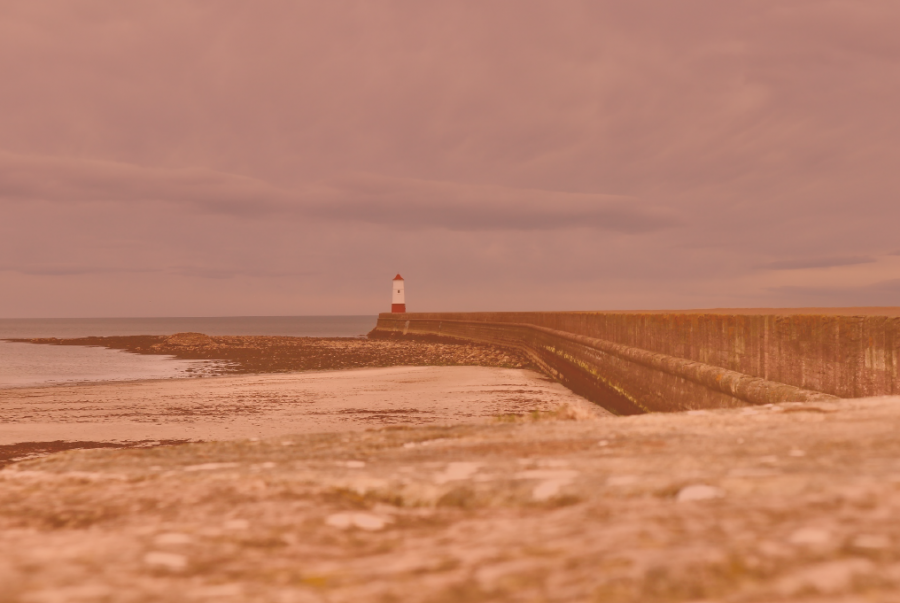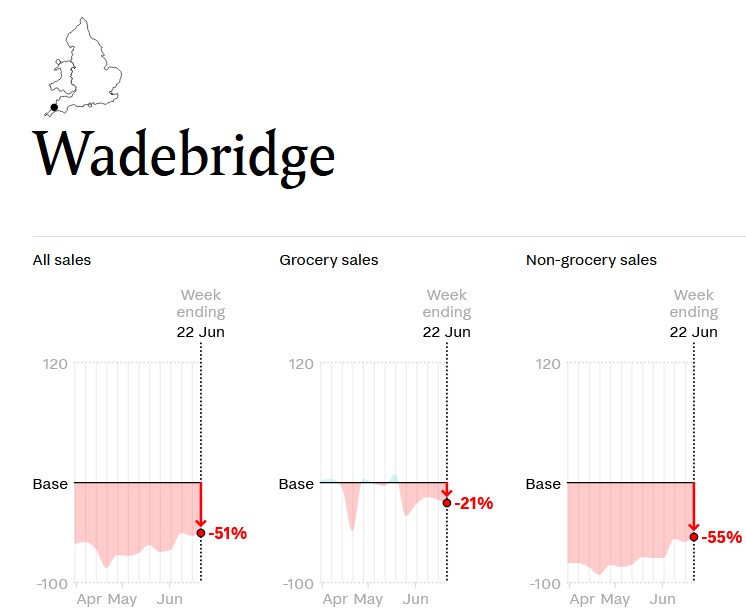COVID-19: Coastal Communities

Yesterday we published our ‘COVID-19 and Coastal Communities’ report, which set out a blueprint on how we can ‘Build Back Better’ by investing in a social economy that generates good jobs and secure incomes for local people. Our Policy Lead Will Thomson summarises our recommendations.
We’ve been writing for some time now that coastal communities have taken one of the biggest economic hits from the COVID-19 pandemic. Seaside resorts, with their local economies centred around seasonal tourism, have seen a collapse in consumer spending and rising unemployment as many businesses in the retail, tourism and hospitality sectors struggle to keep afloat amidst significant drops in trading activity (at what would have usually been high season). Even at the end of June, with many areas seeing a return to normal economic activity, the towns still experiencing the largest reductions in local spending were Wadebridge (-51%), Penzance (-42%) and Pwllheli (-40%). This has also correlated with job losses – of the top 20 areas with the highest increases in unemployment, 18 were coastal.
According to our data, Wadebridge has been the worst affected town, suffering the largest reduction in spending and highest increase in unemployment rate:

Figure 1: Wadebridge sales data
Source: Tortoise Media
Coastal communities will find it hard to bounce back in the recovery period. Unlike more affluent parts of the UK, seaside resorts and ex-industrial coastal towns had a set of pre-existing social and economic issues that made them particularly vulnerable to this kind of crisis. When grouped together, coastal communities perform badly in terms of productivity, growth and job creation compared to other areas – this is made apparent in the ‘coastal community wage gap‘ where average annual pay is around £4,700 lower than the rest of the UK.
Lower income households tend to find it harder to weather the income shocks that economic crises bring because a greater proportion of their spending goes towards essentials and bills – things that are more difficult to cut if they experience falls in incomes. This has knock on effects for businesses in areas with low local purchasing power, as there will be less money circulating in the local economy to help support an economic uplift in the recovery.
Whether we are talking about ‘recovery’, ‘bouncing back’, or ‘levelling up’, we need to understand the particular socio-economic factors of a place, and use this understanding to inform our decision-making. Based on what we know about coastal communities and how they have been impacted by the pandemic, the recovery process will require a long term approach that: (i) enhances employment opportunities for local people, (ii) raises incomes and living standards in the most deprived communities, (iii) diversifies the local economy to provide greater resilience; and (iv) innovates with new business ownership models that lead to greater economic redistribution and better quality work.
Yesterday, we published a new report on COVID-19 & Coastal Communities. This sets out our plan for a fair recovery in seaside towns and coastal communities by investing in the social economy to generate good jobs and secure incomes for local people. Our recommendations fall into three categories:
Investment and non-financial support to support employment opportunities and income growth
From our experience managing the Futurebuilders England Fund, we know that patient, flexible social investment can be effective at creating jobs in some of the most deprived areas of the country. This investment approach could work efficiently to expand employment opportunities for local people and grow their incomes, helping to support coastal communities through the recovery period and beyond.
Establish a new £200m Coastal Recovery Fund, targeted at coastal communities that have been most severely impacted by the pandemic. This would have a specific focus on supporting social businesses over a long period and be blended with a grant portion alongside any loans. Repayments from the loans could be returned and reinvested in the local community, ensuring both significant public benefit alongside value for money.
Repurpose existing funding streams to invest in local social infrastructure – using money already allocated to coastal areas through the Towns Fund and Coastal Communities Fund to invest in community space, local business incubators and skills and training facilities.
2.New ownership models to support a more resilient local economy
The scale of ambition should match the scale of the long-term challenges facing coastal communities. We are interested in supporting the growth of social business models with democratic forms of shared ownership, which have the potential to transform employment by paying higher wages, increasing workforce solidarity and providing a richer set of benefits to employees.
Explore the potential for hybrid shared ownership anchor industries in ex-industrial coastal towns – such as renewable energy. A hybrid shared ownership model, where the local community and employees are shareholders alongside other investors, can create an accountability mechanism that ensures better redistribution of profits, with benefits accrued to the people who live and work in these towns rather than a set of private shareholders.
Establish regional Public Holding Companies to buy up and support at-risk businesses at scale. These can maintain businesses in sectors like hospitality or tourism, which are experiencing a temporary (if protracted) disruption to trading, until they are viable again – rather than allowing private equity to buy up cheap assets following business liquidation. This would help to avoid the economic damage and dislocation experienced by communities when significant local employers go into administration. Following stabilisation, the holding companies could divest from its portfolio of businesses, returning them to local ownership or facilitating the transition to more democratic forms of shared ownership.
3.Bringing local coastal assets into community ownership
The most successful social and community enterprises are those that can connect into the wider local economic network. However, high fixed costs, particularly rent, can make operating costs unsustainable. Many landlords will often prefer to leave shops empty for considerable periods in hopes of a tenant willing to pay unrealistic prices, or those based on unrealistic valuations. Community-owned assets can provide a low-rent environment for the social economy to grow and scale.
Expedite the transfer of local coastal assets (heritage, abandoned, at-risk or natural) into community ownership. This could be achieved through new legislation that allows community bodies to a right to buy and take over land and buildings (similar to the Scottish Government’s ‘Community Right to Buy’). The Government should look to expand alternative models of community ownership, such as Development Trusts, which can own and manage a portfolio of community assets at scale, minimising the risk involved in smaller community organisations taking control of a single asset with an unsustainable business model.
Establish the £150m Community Ownership Fund as promised in the 2019 Manifesto – this should aim to provide finance to community organisations looking to take ownership of local assets, alongside strategic business support to build their capacity and resilience in managing and maintaining these assets.
COVID-19 has hit coastal communities hard, but we now have an opportunity to rethink how we more fairly rebuild and regenerate these local economies after the pandemic. We need to think about how to rebalance the income gap and support those who are unemployed back into work. Building back better in these areas means better employment opportunities, secure incomes, stronger social infrastructure, and a more resilient local economy. This report sets out some tangible and ambitious ideas on how we get there.
Read our full ‘COVID-19 and Coastal Communities’ report here: SIB – Covid-19 Coastal Communities – Final Version (July 2020) (002)
